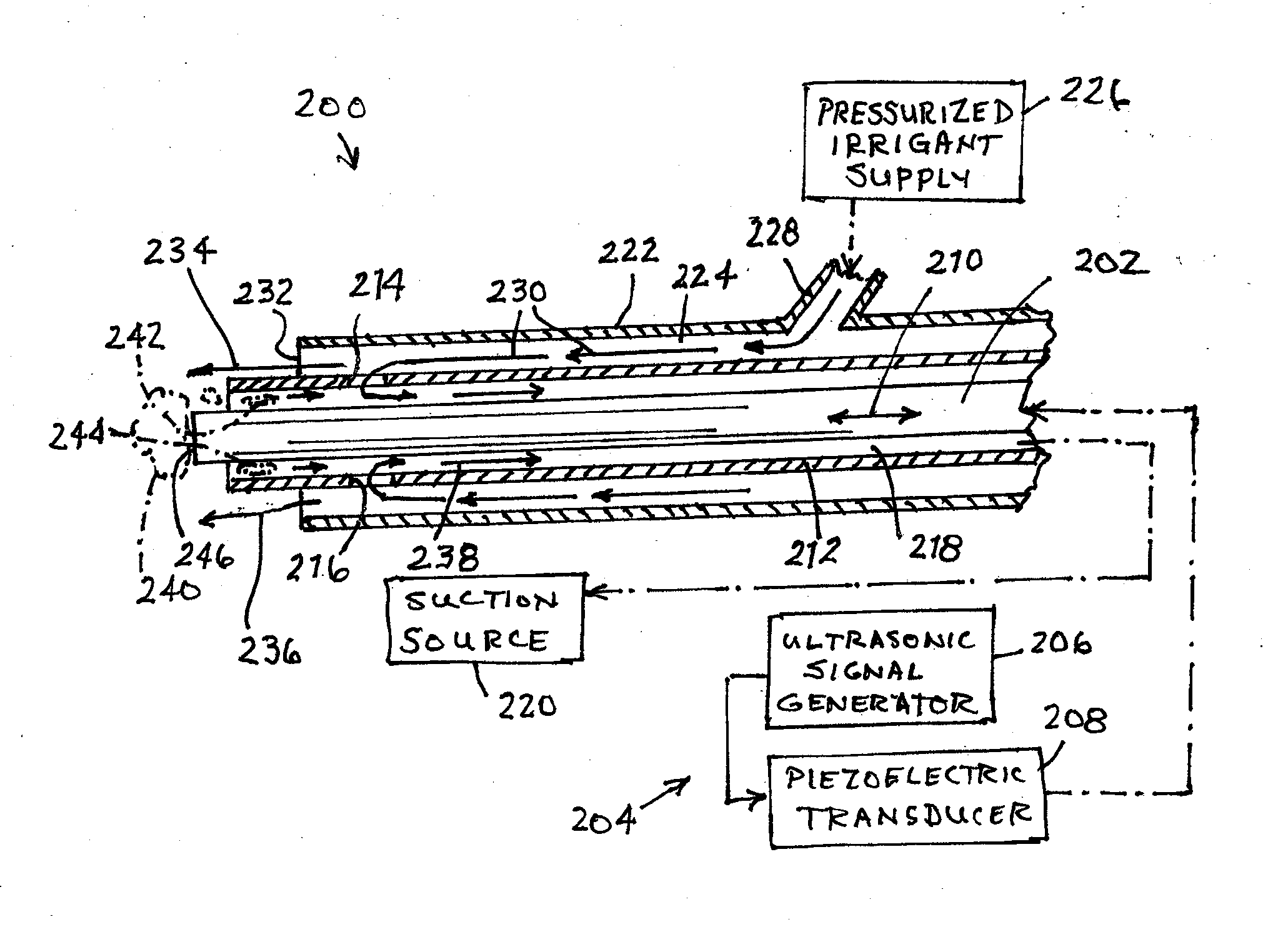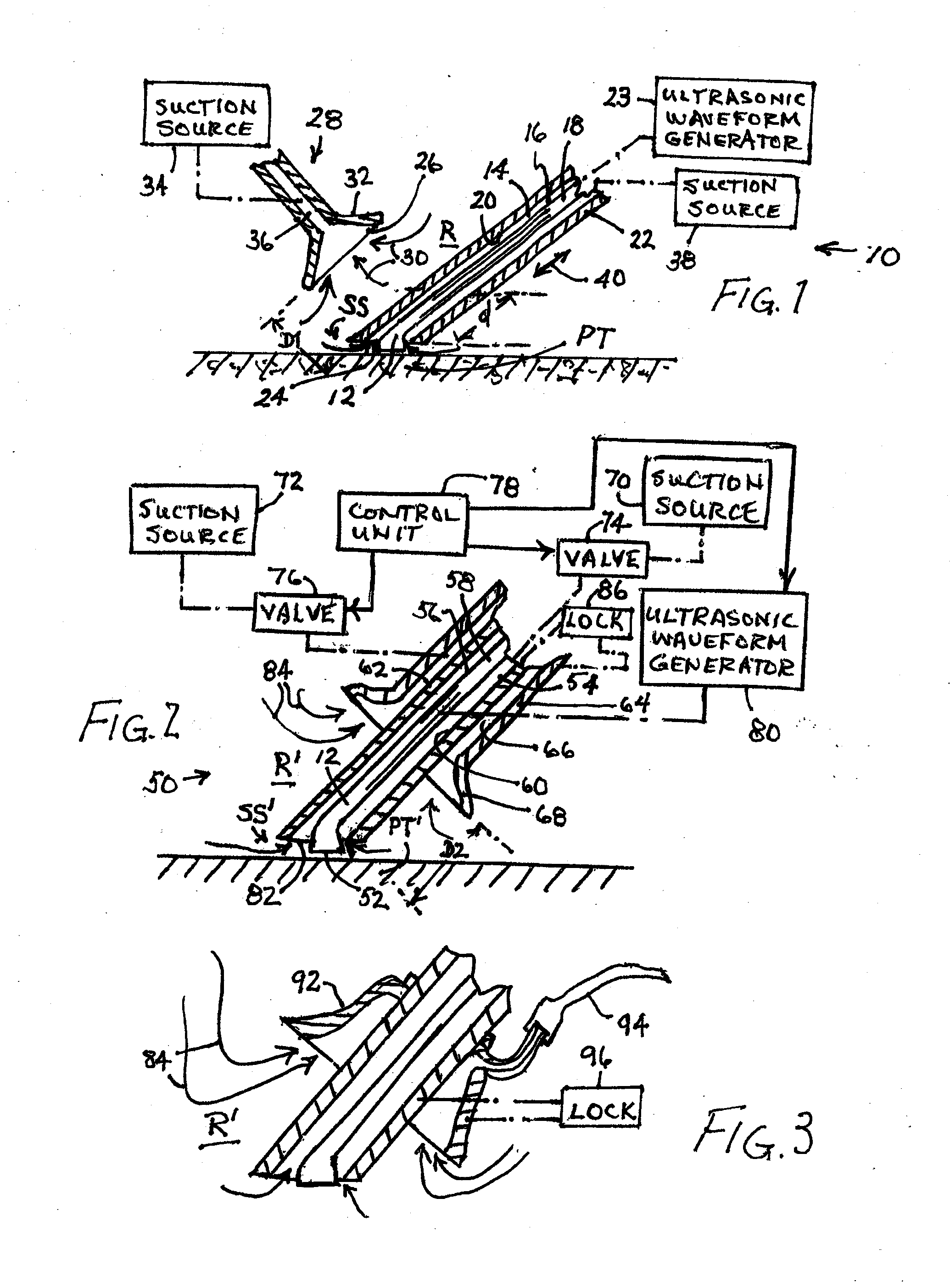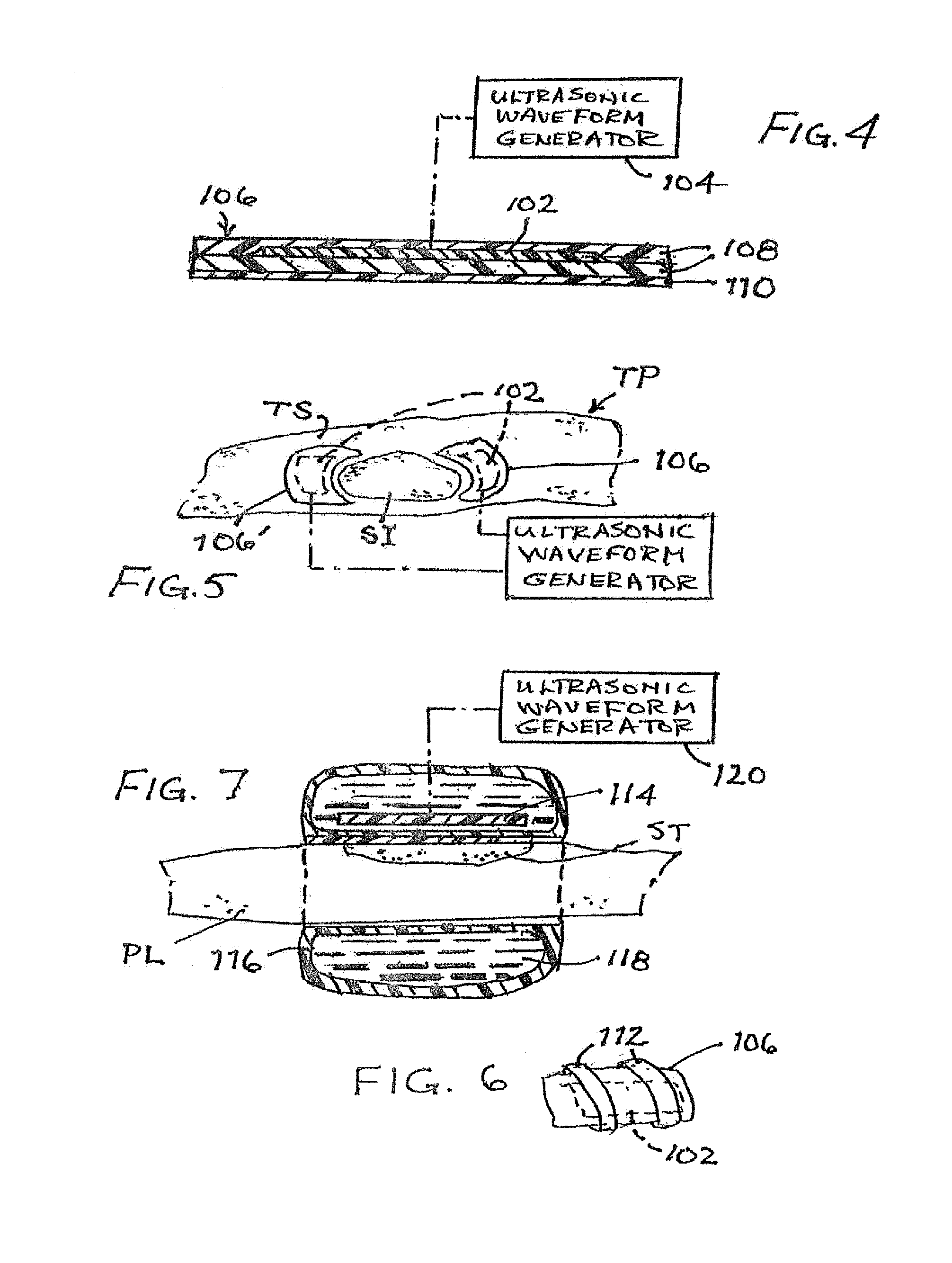Method for reducing biofilm formation
a biofilm and apparatus technology, applied in the field of apparatus and methods for reducing biofilm, can solve the problems of biofilm formation, impede healing, and chronic wound infection, and achieve the effect of accelerating healing
- Summary
- Abstract
- Description
- Claims
- Application Information
AI Technical Summary
Benefits of technology
Problems solved by technology
Method used
Image
Examples
Embodiment Construction
[0061]The present disclosure contemplates a two phase method for reducing the formation of biofilm. The first phase is performed where a wound site is being treated for removal of necrotic tissue, eschar or biofilm and includes an evacuation of ambient air from a region about the surgical or treatment site, to extract airborne or aerosolized bacteria ejected from the site by the treatment. The extracted bacteria are prevented from settling back onto the cleansed tissue surface, thus at least reducing colonial bacteriological growth and concomitantly exuded biofilm material. The second phase or approach for reducing biofilm involves the attachment of one or more ultrasonic transducers to the patient over or near a surgical treatment site after the surgery is terminated. Each applied ultrasonic transducer is used to vibrate the patient's tissues at the treatment site to disrupt biofilm formation. The two phases of treatment may be used separately depending on the application. Thus, ul...
PUM
 Login to View More
Login to View More Abstract
Description
Claims
Application Information
 Login to View More
Login to View More - R&D
- Intellectual Property
- Life Sciences
- Materials
- Tech Scout
- Unparalleled Data Quality
- Higher Quality Content
- 60% Fewer Hallucinations
Browse by: Latest US Patents, China's latest patents, Technical Efficacy Thesaurus, Application Domain, Technology Topic, Popular Technical Reports.
© 2025 PatSnap. All rights reserved.Legal|Privacy policy|Modern Slavery Act Transparency Statement|Sitemap|About US| Contact US: help@patsnap.com



